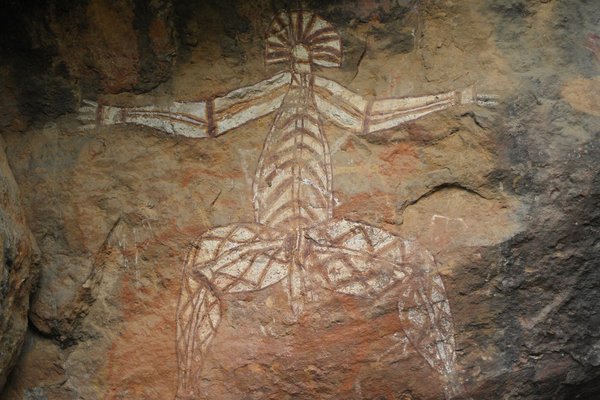Australia
Kakadu National Park
Kakadu National Park comprises wetlands and cliffs, that have been used by Aboriginal cultures for over 50,000 years.
Its rock art reveals insights into hunting and gathering practices, social structure and ritual ceremonies of Indigenous societies. Its variety of ecosystems hold a huge diversity of flora. Large numbers of waterbirds live here, and the wetlands are the breeding habitat of the endangered saltwater crocodile and the pig-nosed turtle.
Community Perspective: The park is prone to flooding in the wet season, but two of the most popular sights are open all year: the rock art at Nourlangie Rock and the Yellow Water Cruise. May-October is the best time to visit, and the usual point of departure is Darwin (there is even a bus service). There’s enough to see to fill 3 days.
Site Info
Official Information
- Full Name
- Kakadu National Park (ID: 147)
- Country
- Australia
- Status
-
Inscribed 1981
Site history
History of Kakadu National Park
- 2011: Boundary change
- To include the enclave known as the Koongarra Project Area
- 1992: Extended
- To include the full extent of the Park
- 1987: Extended
- Extension of the park, with additional areas in the Alligator River Region
- 1986: Deferred
- At request of Australia to permit bigger area
- 1981: Inscribed
- Inscribed
- Type
- Mixed
- Criteria
- i
- vi
- viii
- ix
- x
Links
- UNESCO
- whc.unesco.org
- Official
-
- kakadu.com.au — Kakadu National Park
- Related
-
- en.wikipedia.org — Wiki on Kakadu
All Links
UNESCO.org
- whc.unesco.org — whc.unesco.org/
Official Website
- kakadu.com.au — Kakadu National Park
Related Resources
- en.wikipedia.org — Wiki on Kakadu
News Article
- Oct. 24, 2024 theguardian.com — Parks Australia ordered to pay $200,000 fine for disturbing sacred site in Kakadu national park
- March 6, 2023 abc.net.au — Kakadu National Park rangers prepare for mass culls of feral animals after population boom
- May 7, 2021 au.news.yahoo.com — Kakadu site closure amid racism claims
- Feb. 24, 2021 nzherald.co.nz — Traditional owners threaten to shut down Australian Unesco site Kakadu National Park
- Feb. 16, 2021 au.news.yahoo.com — Tourism revamp for Kakadu National Park
- Sept. 14, 2020 bbc.com — Humpback whales enter crocodile river 'in Australian first'
- Oct. 31, 2017 cosmosmagazine.com — Kakadu “underwater” in less than a century
- Feb. 28, 2017 abc.net.au — Kakadu buffalo farm management raises more questions than answers
- Dec. 23, 2016 abc.net.au — Kakadu buffalo farm may breach world heritage obligations, traditional owners fear
- Feb. 9, 2016 abc.net.au — Rivers down and cruises cancelled as Kakadu National Park swelters through one of its driest wet seasons on record
- June 7, 2014 abc.net.au — Man taken off boat by crocodile in Kakadu NP
- Jan. 28, 2014 independent.co.uk — Boy feared taken and another wounded by crocodile attack in Kakadu
- Dec. 8, 2013 theguardian.com — Kakadu traditional owners sound alarm over spill of radioactive material
- June 28, 2011 abc.net.au — After more than 30 years, a uranium-rich piece of Aboriginal land near Kakadu National Park has been added to the World Heritage List
- Dec. 14, 2009 australiamagazine.co.uk — Kakadu National Park will be re-introducing entry charges for visitors from April 2010
Community Information
- Community Category
- Natural landscape: Rivers, Wetlands and Lakes
- Archaeological site: Prehistoric
- Archaeological site: Rock Art
Travel Information
Recent Connections
-
Language isolate
Nowadays all aboriginal languages spoke… -
Perfect Inscriptions
1981 -
Savanna
"Its savanna woodlands and lowlands, wh…
Connections of Kakadu National Park
- Trivia
-
-
Squatting figure
"The squatting figure painted in the X-ray style in Kakadu National Park in Australia is also very eye-catching. It's inferred that it might be associated with the patterns of ancestral spirits painted by the aboriginal, but the squatting-posture shape is rare to find in the rock art site in the Park, and it's not the dominant human figure." (Zuojiang Huashan Rock Art Nomination file, p. 209) -
Customary ownership
"Generations of Mirarr people have lived traditionally and used the land within the World Heritage-listed Kakadu National Park for thousands of years."See www.abc.net.au
-
- History
- Ecology
-
-
Turtles and tortoises
Habitat of pig-nosed turtle
-
Rainforests
-
Crocodiles
-
Big Waterfalls
Jim Jim Falls -
Oxbow lakes
Yellow Water Billabong -
Natural Arches and Bridges
The Archway -
Eucalypts
.. several endemic plants that are only found in Kakadu such as Eucalyptus koolpinensis (wiki) -
Ratites
emu -
Carnivorous plants
Yellow bladderwort (Utricularia fulva)See en.wikipedia.org
-
Sandstone Formations
sandstone escarpment -
Mangroves
-
Mudflats
"including extensive areas of savanna woodlands, open forest, floodplains, mangroves, tidal mudflats" (OUV) -
Savanna
"Its savanna woodlands and lowlands, which make up about 80% of the park, house a huge variety of plants and animals."See kakadu.gov.au
-
- Damaged
-
-
Affected by Climate Change
The forests continue to decline because of salinization driven by sea level rise associated with climate change (Bowman et al. 2010a). Climate change and global warming can also cause erosion in the tidal flats and swamps of mangroves, due the rising sea level (Coastal WHS). -
'Threatened' by Tunnels
Jabiluka Uranium mine tunnel
-
- World Heritage Process
-
-
Perfect Inscriptions
1981 -
Mixed and Serial
-
WHS with enclave
Jabiluka Uranium Mine. (In 2011 another enclave known as the Koongarra Project Area" was incorporated into the site in a boundary modification.)See en.wikipedia.org
-
Extended more than once
2x -
First inscriptions
Australia: three inscriptions in 1981, with Kakadu National Park as the lowest number -
Mixed sites inscribed on 5 or more criteria
Criteria: i/vi/vii/ix/x. 5- 2 Cultural, 3 Natural -
Extended
1987: Extension of the park, with additional areas in the Alligator River Region; 1992: To include the full extent -
Both cultural masterpiece and superlative natural beauty
-
WHC locations
Sydney (1981) -
Minor modifications after inscription
2011: to include the Koongarra Project Area. Known uranium deposits had led to its exclusion from the National Park and World Heritage site in 1981 with the Koongarra Project Area Act.
-
- Human Activity
-
-
Pictographs
-
Natural sites with indigenous human population
Australian Aborigines -
Hunter-gatherers
The cave paintings, rock carvings and archaeological sites record the skills and way of life of the region's inhabitants, from the hunter-gatherers of prehistoric times to the Aboriginal people still living there. (official description) -
Contact Rock Art
Nanguluwur .....(t)here is also an interesting example of "contact art" depicting a two-masted sailing ship with anchor chain and a dinghy trailing behind. (wiki) -
Aboriginal Australians
Criterion (vi) : The rock art and archaeological record is an exceptional source of evidence for social and ritual activities associated with hunting and gathering traditions of Aboriginal people from the Pleistocene era until the present day. -
Gold production
-
Uranium Mining
The boundaries of the inscribed site exclude a totally surrounded enclave where Uranium extraction takes place today. Before the NP was created, between 1956 and 64, smaller scale mining took place at Coronation Hill (Guratba). The inclusion of this area within the NP and its exclusion for further mining operations was the subject of a major dispute during the 1980s. The former mining areas were radio-actively contaminated and "in May 2006, the Australian Government allocated $7.3 million over four years to the Director of National Parks to rehabilitate Guratba (Coronation Hill) and other mine sites and associated workings in the area" (E.g Sleisbeck Mine) -
Language isolate
Nowadays all aboriginal languages spoken by the traditional custodians of the park belong to the Gunwinyguan language family, which is partially the result of language shift, but until the death of Big Bill Neidjie in 2002 Gaagudju, a language isolate, was one of the major languages spoken in the area of the NP. The NP is named after the people who used to speak this language. Evans 1997 proposed the putative Anhem Land language family, which includes Gaagudju, but Glottolog does not recognise it due to lack of evidence.
-
- WHS on Other Lists
-
-
Ramsar Wetlands
Kakadu National Park, 1980, 1989 -
Centres of Plant Diversity
Au4 Kakadu - Alligators River Region - "The property protects an extraordinary number of plant and animal species" -
World Heritage Forest Programme
-
- Timeline
-
-
Late Pleistocene
Oldest paintings ca. 20,000 years old
-
News
- theguardian.com 10/24/2024
- Parks Australia ordered to pay $20…
- abc.net.au 03/06/2023
- Kakadu National Park rangers prepa…
- au.news.yahoo.com 05/07/2021
- Kakadu site closure amid racism cl…
Recent Visitors
Visitors of Kakadu National Park
- Alexander Parsons
- alicemears
- ALS
- Ammon Watkins
- Argo
- Atila Ege
- Bill Maurmann
- Bram de Bruin
- Brett Baumann
- CampbellME
- Carlo Medina
- Colossus
- Daniela Hohmann
- dave wood
- Delphine Delaunay
- DutchHorn
- Elf21
- Els Slots
- Erik G
- Erik Jelinek
- Eva Kisgyorgy
- Fan Yibo
- Fernweh
- Francky D'Hoop
- Gary Arndt
- George Gdanski
- Gernot
- giloudepuertorico
- Gjert
- Harald T.
- Iain Jackson
- Ingrid
- IreneKD
- Ivan
- Jarrod_Byham
- Javier Coro
- Jean Lecaillon
- Jens
- Jezza
- Joel on the Road
- Karito Vies
- KateY
- KeithBailey
- Klaus Freisinger
- ko9757
- Kurt Lauer
- Lameduck99
- Lars Bogstad
- Lazerway
- Linz
- Loic Pedras
- Lucas Del Puppo
- lynnz317@aol.com
- Malgorzata Kopczynska
- Michael Ayers
- MichaelH
- Michael Novins
- Michael Turtle
- Mihai Dascalu
- Monica Tasciotti
- MoPython
- Morodhi
- Naim Y
- Nicole Lampos
- Nihal Ege
- opperpco3
- PabloNorte
- padisenvacance
- Patrik_globe
- Philipp Peterer
- Pieter Dijkshoorn
- Pink Bunny
- Qin Xie
- ReallyDeepThoughts
- Risson
- Rob Wilson
- Roger Ourset
- Rosemary
- Sergio Arjona
- Shandos Cleaver
- Sutul
- Tamara Ratz
- tedchang
- Thomas Buechler
- Tim Allen
- Timothy C Easton
- tony0001
- Tschibi
- Twobaconsandaboston
- Vanessa Buechler
- Vernon Prieto
- vhorne
- Walter
- Wimmy
- Zoë Sheng
Community Reviews
Show full reviews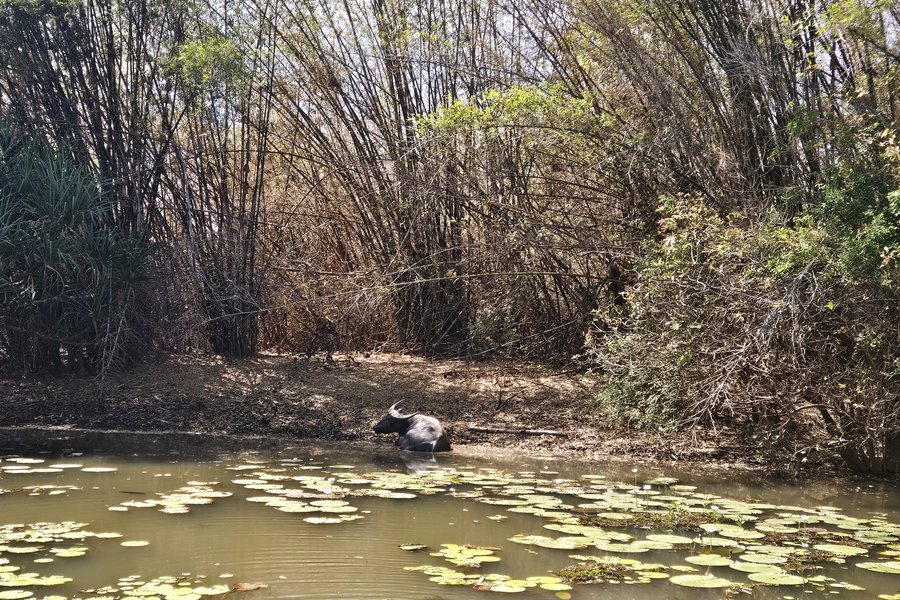
The Kakadu National Park is amazing. It was truly the highlight of my Australia trip and even though it was not even on my original plan, my only regret is not having planned in more time there. I visited in August, which is dry season and very nice 32 degrees (especially coming from rather cold Sydney, this time of the year). I will probably use this site as a reference in the future, whenever I have to explain what WHS and OUV is about to friends and family.
At Darwin airport I rented a car from Alice Car Rental, as they give you a comparably generous 250km per day and a good rate for extra km. It’s family owned and very friendly. Inside the park we spent the night at the Mercure Kakadu Crocodile in Jabiru. A hotel shaped like a crocodile. There are no cheap accommodation options within the park, except camping.
In the morning we visited the beautiful Ubirr Rock Art site. This alone would be an excellent WHS. Entry is free and there is interpretation of some of the drawings. Close to Ubirr you can find Cahills Crossing, where cars need to cross the river by driving through it. From the viewing platform we spotted several Crocodiles. Probably hoping for someone being stupid enough to try and cross by foot.
Another stop was the Mirray lookout, where you can hike the forest to a platform, that gives you a nice view over the park.
The nature highlight …
Keep reading 0 comments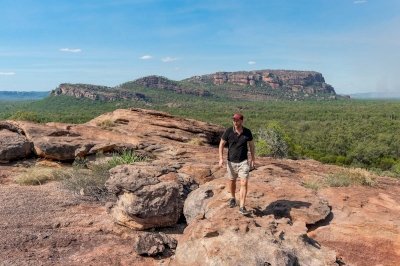
Visiting Kakadu is extremely dependent on the weather. This part of Australia has two distinct seasons - wet and dry - and much of the national park is inaccessible during the wet season. As the dry begins, different parts of the park open up at different times, as the unsealed roads become passable and areas are cleared of crocodiles. I mention all of this at the start just as advice for anyone thinking of visiting - make sure you think about when you're going and what you'll be able to see. (For the record, wet season can be quite incredible because the waterfalls are in full flow, but you may want to see them by helicopter, rather than road, for instance.)
I visited in dry season, when most things were accessible, and spent three nights in Kakadu. I felt like that was just the right amount of time - anything shorter and I would've left feeling like I had missed things. I certainly could've stayed longer and visited even more parts of the park, but I think I covered all of the main elements.
The landscapes change a lot throughout the park because it's so big (about the size of Slovenia). There are areas of dramatic sandstone escarpments, expansive wetlands full of birds, as well as lots of woodland. You'll get more out of the visit if you're able to experience this variety, and some highlights are stone country at Burrungkuy (Nourlangie), wetlands at Yellow Water, and the …
Keep reading 0 comments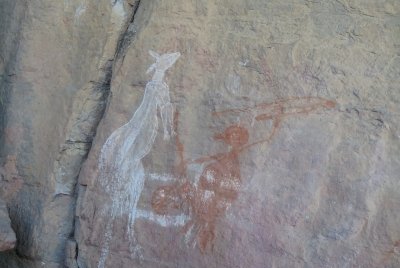
You will notice that renting a car in Darwin gives you a grand total of 100km to drive per day unless you want to fork out lots of money. Doing the math I think it's only worth renting and driving all the way to Kakadu if you are 3 people or more or actually do more things on the way. Just going to Kakadu and back as a daytrip is not gonna work. Luckily they have an affordable bus trip that picks you up bright and early (it's not early-early like a "daytrip" to Jordan from Sinai or something silly...) and drops you back at ~8pm so this isn't actually bad at all. I even took a flight out the same evening and got dropped off at the turn-off so I can grab an Uber to the airport just 10 minutes away. The coach is also super comfy with toilet and aircon etc.
The visit via this trip only covers around 1% of what the park really has to offer but I think that's normal for a park this size. The roads are really good but there is not much off-roading. This tour also obviously doesn't visit any waterfalls in the south.
The first stop is gonna be the the rock art. It's really nice although I have to wonder about the modern one. It does follow the same style but I think that when aboriginals painted these ages ago that's an achievement but if an artist does …
Keep reading 0 comments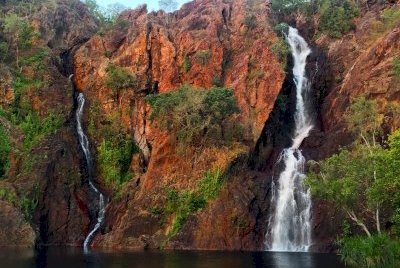
In my opinion, Kakadu National Park is one of Australia's most impressive sites. Home to ancient culture, gorgeous natural scenery, and a colossal variety of plants and animals, there's a lot to love about Kakadu. We visited the park over three days in June 2016, which gives you ample time to explore the various areas.
To reach Kakadu, your best option is to drive in from Darwin - a roughly 2 hour, 150km drive. It's best to go during dry season (May-October) as this is also the coolest time of year. Wet season from November-April is hotter, stickier and of course wetter: many roads in Kakadu will be flooded and impassable.
Aboriginal Australians have lived in Kakadu for around 50,000 years, and it's the oldest continuous culture on earth. Locals today can look at ancient rock paintings and understand the stories as if they were painted yesterday. The best rock art in Kakadu is found at both Ubirr and Burrunguy (formerly Nourlangie Rock), where you'll find a lot of interesting stuff: animals, humans, and spiritual art like the Rainbow Serpent who created the world during the Dreamtime. Ubirr Rock is also a mesmerising place for sunset.
For bird-watching, Yellow Waters Billabong near Cooinda is the best place. A great option here is to grab a sunrise or sunset boat tour - we managed to do both and preferred the sunrise tour as we saw more, though this is probably dependent on luck and the skill of your …
Keep reading 0 comments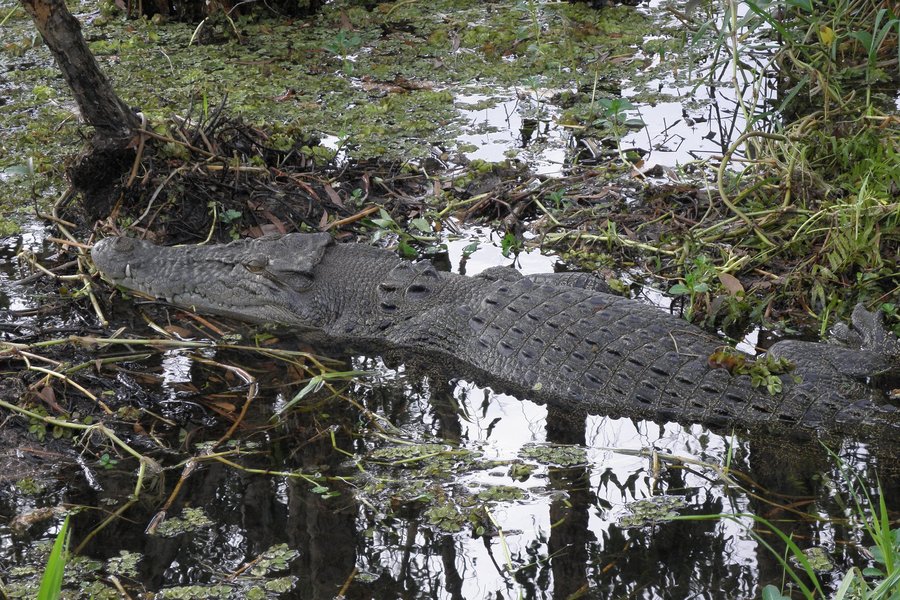
I had the great opportunity to travel from the University of Melbourne all the way to Kakadu with a group of uni students. We hiked up Jim Jim Falls for 5 days. The experience was unforgettable, as we camped under the stars only in our sleeping bags (lugging tents while hiking up the falls was not an option). I truly felt at peace, spending my days swimming and hiking. This is a heritage site not to be missed!
Keep reading 0 comments
Even though I was in Kakadu only for two days, I enjoyed it a lot. This place is immensely fascinating and truly deserves its place on the WH list. The wildlife is great - yes, you can easily spot crocodiles -, the flora stunning, and the rock carvings and paintings add another interesting feature as well. I was there during rainy season, you could hardly go anywhere without a boat, and it was raining most of the time, but still this is one of my favorite places in Australia, if not the world. I hope that Kakadu will remain the wild place it is now, since I have heard that UNESCO has reprimanded Australia for allowing mining to continue in the park.
Keep reading 0 comments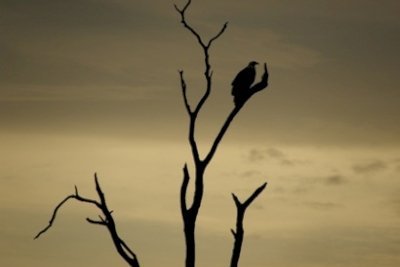
I visited Kakadu in early April, and it was still very wet. It had rained extensively over the past months, and most of the roads were closed due to flooding. Only the two main roads through the park, the Arnhem Highway from Darwin east to Jabiru and the Kakadu Highway from Jabiru south to Pine Creek, were open. It was still raining slightly during the two days I spent in the park. Fortunately, two of the best things to do in the park are open in the wet season too: Nourlangie Rock and the Yellow Water Cruise.
Nourlangie Rock is located a few km from the main Kakadu Highway. The road to it is sealed, and it leads up to the large sandstone escarpment that cross-sects the park – so it is accessible all year round. There are a couple of short hikes you can do here. I did the loop walk, which takes you past the various rock paintings. Their setting is similar to those at Bhimbetka in India, which I saw earlier on this RTW trip: they are under overhanging rocks or rock shelters. The quality of the paintings is pretty spectacular, and the images are different from rock art elsewhere in the world. Of course, they display typical Australian animals like kangaroos. Several of the paintings are large images of aboriginal spiritual beings. There’s also “contact art”: paintings made after contact with European explorers, for example in the form of a gun.
The Yellow Water …
Keep reading 0 comments
I had the great opportunity to travel from the University of Melbourne all the way to Kakadu with a group of uni students. We hiked up Jim Jim Falls for 5 days. The experience was unforgettable, as we camped under the stars only in our sleeping bags (lugging tents while hiking up the falls was not an option). I truly felt at peace, spending my days swimming and hiking. This is a heritage site not to be missed!
Keep reading 0 comments
I only spent a few days in Kakadu, but I wish I could have spent a month. This is a truly beautiful place, that should be a must for all visitors to northern Australia.
Keep reading 0 comments
Even though I was in Kakadu only for two days, I enjoyed it a lot. This place is immensely fascinating and truly deserves its place on the WH list. The wildlife is great - yes, you can easily spot crocodiles -, the flora stunning, and the rock carvings and paintings add another interesting feature as well. I was there during rainy season, you could hardly go anywhere without a boat, and it was raining most of the time, but still this is one of my favorite places in Australia, if not the world. I hope that Kakadu will remain the wild place it is now, since I have heard that UNESCO has reprimanded Australia for allowing mining to continue in the park.
Keep reading 0 comments
